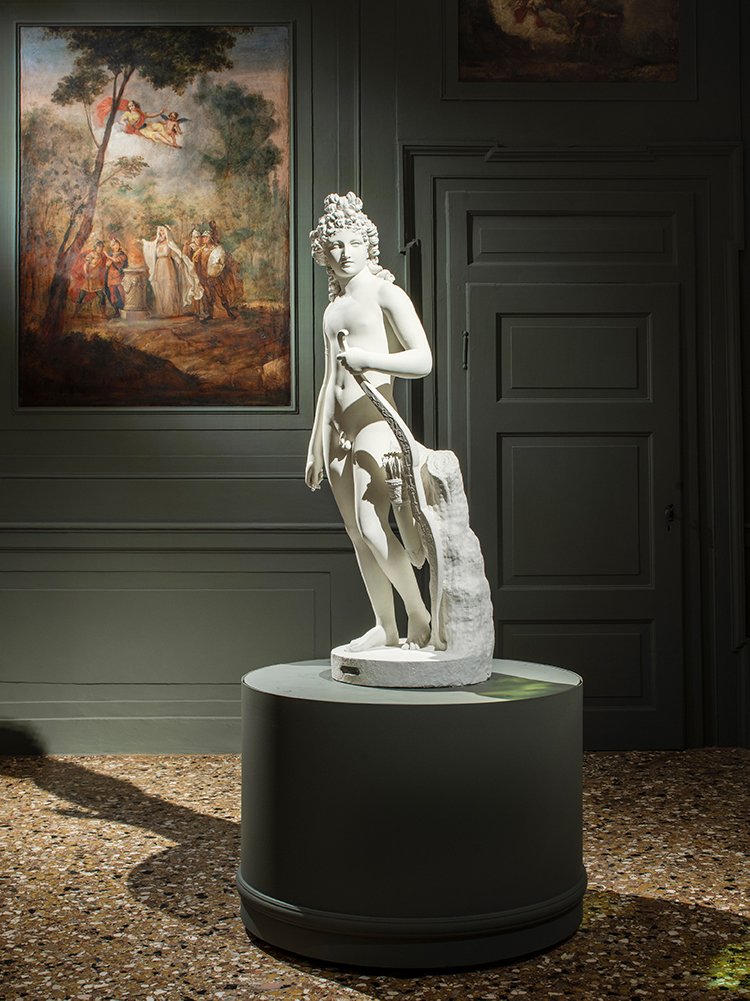Antonio Canova
(1757-1822)

Antonio Canova was born in Possagno (Treviso) on November 1, 1757. After his father died, his mother remarried and Antonio was raised by his paternal grandfather, a skilled stonemason who soon noticed his grandson’s precocious talent. Moving to Venice to hone his technique, Canova made his official debut in 1776 when he presented Orpheus and Eurydice (now in the Museo Correr) to the Venetian public.
The following year, the sculptor opened his own studio in San Maurizio, and with the earnings from his first major commissions in 1779 he was able to travel to Rome to perfect his art. In Rome Canova found a source of inexhaustible inspiration, which is why he decided to remain there permanently, making numerous trips to Italy and Europe anyway.
In the meantime, his art, capable of idealizing the models of the ancient world, made him famous throughout Europe as a leading exponent of Neoclassicism: even Napoleon Bonaparte, whose conquest of Italy had sanctioned the end of the Venetian Republic in 1797, invited him to Paris in 1803 to have a marble bust of his own.
Canova created for the Musée Napoléon the colossal Napoleon as a pacifying Mars and numerous other works for the emperor and his entourage, until he earned the title of official artist of the regime.
With the collapse of Napoleon’s empire in 1815, Canova went to Paris on behalf of Pope Pius VII as general inspector of antiquities and the arts. The aim of his travel was to bring back to Italy all of the art treasures stolen by Napoleon army and brought to the Louvre: 249 works (including the Laocoon, and the Apollo del Belvedere) were packed up and returned to their original locations in Italy.
Canova died in Venice on October 13, 1822. His body was buried in the Possagno temple he designed, while instead his heart is preserved inside the funeral monument created by his pupils in his honor in the Basilica dei Frari in Venice.
Antonio Canova’s most famous works also include The Three Graces, Cupid and Psyche, Theseus and the Minotaur, and Pauline Bonaparte as Venus Victrix.